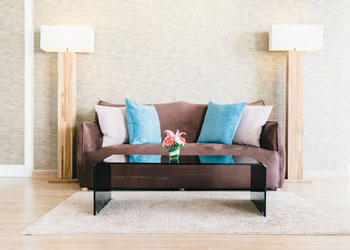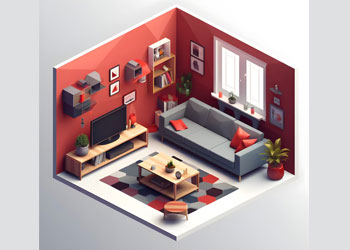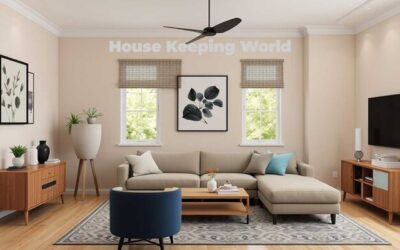You may greatly improve the appearance of the couch and your entire space by styling it with consideration for its size and shape. A sofa draws the most visual attention because it is likely the largest piece of furniture in your living or family room. A large couch left too plain, without any pillows or textural throws, might give the impression that the room is empty, and cramming too many people onto a two-seater can make it appear crowded. Home furnishing is also an art. Let’s know how to arrange furniture for the living room.
Make the most of your favorite piece of furniture by following these couch style guidelines, which include pillow size recommendations and complimentary furniture options, whether you have an elongated sectional or something else.
Guidelines for Living Room Sofa
Start with the largest piece of furniture when organizing your living room’s furnishings. Usually, this is the sofa; occasionally, it’s an armchair. Place the artwork with its most noticeable element facing you, this might be a window, gallery wall, TV, or fireplace. The sofa may obstruct some natural light if it is positioned right in front of a window. Try to avoid doing this. Next, place other compact sitting alternatives next to or across from the initial piece, like chairs or love seats. Lastly, fill in the spaces with accent pieces such as lamps, coffee tables, end tables, and ottomans. Ensure that every seat can be reached by at least.

Small living room layouts
It’s not the best idea to put all of your furniture against the walls in a compact living room, despite popular opinion. This draws attention to the confined space in the middle and creates an uncomfortable area. To generate an impression of greater openness, move furniture toward the center instead.

How to Furnish a Rug with Furniture
To bring a seating group in a larger space together, use a large area rug. All important furniture should, in general, fit on top of the carpeting. Make sure the front legs of every piece of furniture are on the rug if the rug isn’t large enough to fit it all.
Large Living Room Designs
Large or especially lengthy living rooms can feel exceptionally comfortable and private with careful furniture placement. Create a walkway between the two conversation groups to give the space a comfortable sense of scale. The division between the two spaces is highlighted by positioning one sofa with its back to this passageway.
Organize Furniture in the Living Room to Encourage Conversation
If you frequently have conversations with family and friends in your living room, arrange your furniture in a way that makes talking easier. The sitting pieces should be pulled into the center of the space and arranged so that they face one another. To keep drinks easily accessible on all sides, position a coffee table in the center.
Symmetrical living room layouts
In living spaces, symmetry imposes a neat feeling. Try positioning similar couches or chairs across from one another to create an eye-catching equilibrium. Even if your furniture pieces don’t match precisely, you can still arrange items with the same dimensions on opposite sides of the space to create a symmetrical appearance.
Focus on the View
An eye-catching focal point is the foundation of any well-designed living room arrangement. This function is typically fulfilled by a fireplace, like in this vibrant living area. Arrange the additional seating pieces around the main seating piece, with the main seating piece oriented toward the focal point. The area might be rearranged in the summer to emphasize the view from the French doors.
Ideas for an Open Living Room Layout
Use furniture placement to create distinct activity zones in an open-concept living area. This area serves as a gathering place for games or casual meals, with a table and seats on one side of the space. A conversation centered around the fireplace is complemented by a sofa and chairs on the other side of the room.

Image From Freepik
